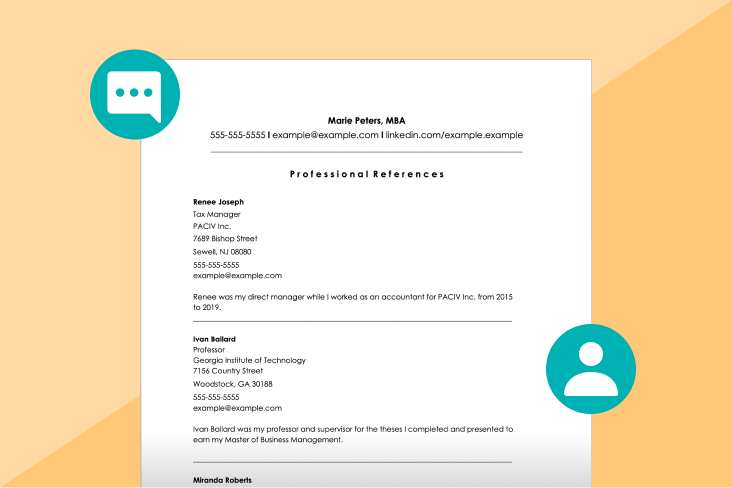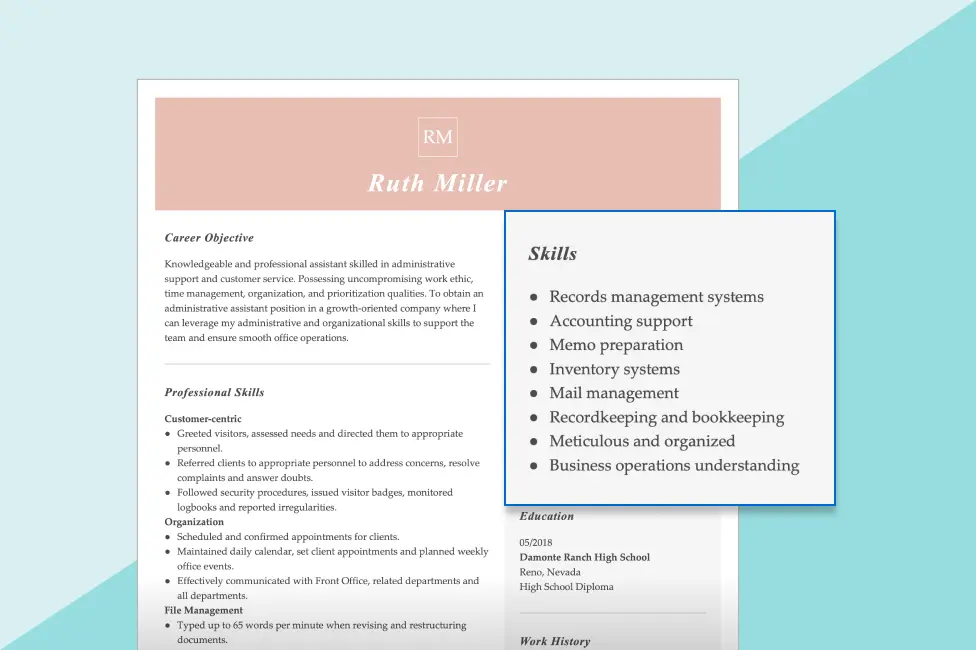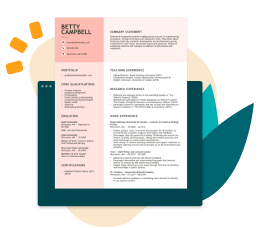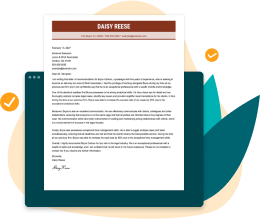Top 10 Job Search Activities (Strategies for 2025)
Whether you’re applying for unemployment or want to improve your job search strategy, these are the best job search activities you can do to land a great role while qualifying for benefits.
Being in between jobs is one of the most stressful situations one can be in. Fortunately, we are here to help you with the tools and resources you need to take control of your professional life.
One of the first things you should do if you’re out of a job is see if you qualify for unemployment benefits. This help is a great resource to keep you afloat while you search for a role that’s right for your skill set and experience.
Without further ado, these are the steps you should take to get back on track!
10 Job Search Activities You Can Do Right Now
1. Apply to jobs with a tailored resume and cover letter.
To land a good, well-paying, long-term job, you’ll need a well-written resume and cover letter—whether you’re submitting online applications or showing up in-person to businesses.
A strong resume is one page long, tailored to a specific job, and organized with a professional resume template.
The cover letter, although not always required, is a key application document that helps you connect more personally with employers and convince them why you’re the right fit for the position.
2. Search for work opportunities using online job boards.
If you want to find jobs and get noticed, you’ll need to move online, where the hiring happens. There are countless job board websites where you can browse job openings. However, although online job boards make work opportunities more accessible, they come with their own set of cons.
These days, ghost jobs are becoming more frequent. Many hiring managers admit to publishing ghost jobs, which are fake open job advertisements when the company isn't actively hiring for that position. Therefore, knowing which job boards are more trustworthy and dependable is key to having a productive job search.
These are some of the best online job boards for your job search activities:
- CareerBuilder
- Dice
- FlexJobs*
- Glassdoor
- Indeed
- LiveCareer’s Job Dashboard*
- Remote.co*
*BOLD LLC operates this website. While we strive to provide objective information, our ownership may influence the review.
3. Consider a temporary position.
One of the best ways to keep earning income, even while searching for a permanent role, is to take a temp position. There are temporary agencies for almost all kinds of workers, and depending on your location, you may find more than one that hires people with your skills.
Besides providing a paycheck, temping is a great opportunity to test out employers and build a case for permanent employment if there is a good fit between you and the employer.
4. Update your resume for each job application.
Your resume isn’t a one-size-fits-all document. It should vary a bit with every job you apply to. Start by making sure it has a clear focus: What job are you targeting, and what unique mix of skills, experiences, and accomplishments do you bring to the table?
Before submitting any application, update your resume to:
- Highlight key accomplishments (not just job duties)
- Prioritize your most recent and relevant experience
- Align your language with the job description and keywords
- Eliminate typos or formatting issues
Tailoring your resume helps you bypass applicant tracking systems (ATS) and shows employers you’ve done your homework.
5. Improve your online networking profiles to attract recruiters.
Recruiters often find candidates through platforms like LinkedIn before they ever apply, so your profile should showcase your skills, experience, and job interests clearly. Update your headline to include relevant keywords and add your most recent roles and accomplishments.
You can also add your resume to LinkedIn so recruiters can get a quick look at your qualifications if your profile pops up on their recruiting search.
Make sure your profile has a professional photo, a custom URL, and a well-rounded skills section. You can also boost visibility by engaging with your network, so comment on posts, share industry updates, or announce that you’re searching for a job.
6. Reach out to a recruiter or hiring manager.
Sending a personalized message to a recruiter or hiring manager can open doors that job boards can’t. Whether it's on LinkedIn or via email, a short, thoughtful note expressing interest in a role or simply asking for advice can lead to valuable conversations or referrals.
Be specific about the job you're interested in and mention what makes you a strong fit. Keep it brief, professional, and polite. You can even send your resume via email to recruiters or hiring managers, even if there isn’t a job opening for someone with your skills. They will likely keep your resume on record and consider you whenever they begin the hiring process.
7. Attend a virtual job fair, webinar, or hiring event.
Virtual job fairs and hiring events are one of the most overlooked yet valuable job search activities. These events connect you directly with employers who are actively hiring, and often include opportunities to chat with recruiters, ask questions, or even interview on the spot.
You can find upcoming events through state workforce websites, LinkedIn Events, or job boards like FlexJobs.
Even if you don’t land a job immediately, these events expand your network, build confidence, and may lead to follow-up opportunities.
PRO TIP
8. Take an online course or certification relevant to your target role.
Whether you’re brushing up on computer skills, learning a new tool, or exploring a new field altogether, short online courses can show employers that you’re proactive and growth-minded.
Look for courses on platforms like Coursera, LinkedIn Learning, Google Career Certificates, or even your local workforce center. Focus on skills that are in demand in your industry like project management, AI tools, customer service, or data analysis.
9. Request informational interviews to learn and expand your network.
One of the most underutilized job search strategies is the informational interview, especially if you're changing careers. An informational interview isn’t about asking for a job; it’s about gaining insight into a role or industry from someone with firsthand experience.
These conversations can help you uncover hidden opportunities, clarify your goals, and grow your professional network. Reach out to professionals on LinkedIn or through mutual contacts with a brief, polite message requesting 15 minutes of their time. Focus on asking thoughtful interview questions and learning from their advice.
10. Make a job application and interview tracker to stay organized.
Staying organized is key to a successful job search when you're applying to multiple positions each week. Creating a job search tracker helps you monitor where you've applied, track deadlines, follow up on leads, and prepare for interviews with ease.
Use a spreadsheet, a tool like Teal, or even a physical notebook to log important details: job titles, companies, application dates, status updates, and any communication with recruiters. This not only keeps you on top of your progress, but also serves as proof of job search activity for unemployment reporting.
PRO TIP
More Job Search Activities Approved for Unemployment Benefits
In many states, you must complete and document job search activities each week to maintain eligibility for unemployment benefits. While applying to jobs is the most obvious task, there are several other approved activities that also count, some of which can actually improve your chances of landing a job.
- Keep a weekly work search log.
Most unemployment programs require you to record your job search efforts, including dates, the employers you’ve contacted, and the activities you’ve completed. This log acts as your proof of eligibility and can be a simple spreadsheet, journal, or online form (depending on your state). - Watch approved career tip videos.
Many state employment agencies offer short, pre-approved videos that share job search tips, interview guidance, or resume writing strategies. Watching these videos can count as a qualifying job search activity and offer helpful insight for improving your approach. - Contact an employer about a job.
Reaching out directly to an employer, even if they haven’t posted a job, can count toward your weekly activity. You could approach potential employers via cold email, LinkedIn message or phone inquiry to ask about open roles or upcoming opportunities. - Participate in WorkSource activities.
State-run employment centers like WorkSource offer free workshops, resume help, training referrals, and virtual hiring events. Attending or participating in these is often one of the most clearly approved activities. - Set up an account on a job search website.
Creating or updating your profile on a job platform like your state’s job board or any other online job board can count as a valid job search activity in many states. Be sure to complete your profile and upload an updated resume for maximum impact. - Complete a self-paced course.
Completing a course on your own time is another valid job search activity in many states. There’s a wide variety of approved self-paced courses for all type of job seekers, for instance, courses related to your profession are great, but a courses like General Educational Development (GED), Adult Basic Education (ABE), or even English as a Second Language (ESL) are valid options as well. - Do app-based gig work.
In some states, accepting temporary or part-time gig work like driving for Uber, DoorDash, or Instacart may be recognized as a work search activity. Just make sure to report your earnings and hours accurately. - Sign up with a career coach.
A certified career coach or resume consultant can help you refine your job strategy and improve your job application materials. Completing sessions with a career coach can count as an eligible job search activity in some states, but either way, it can be a huge confidence boost.











